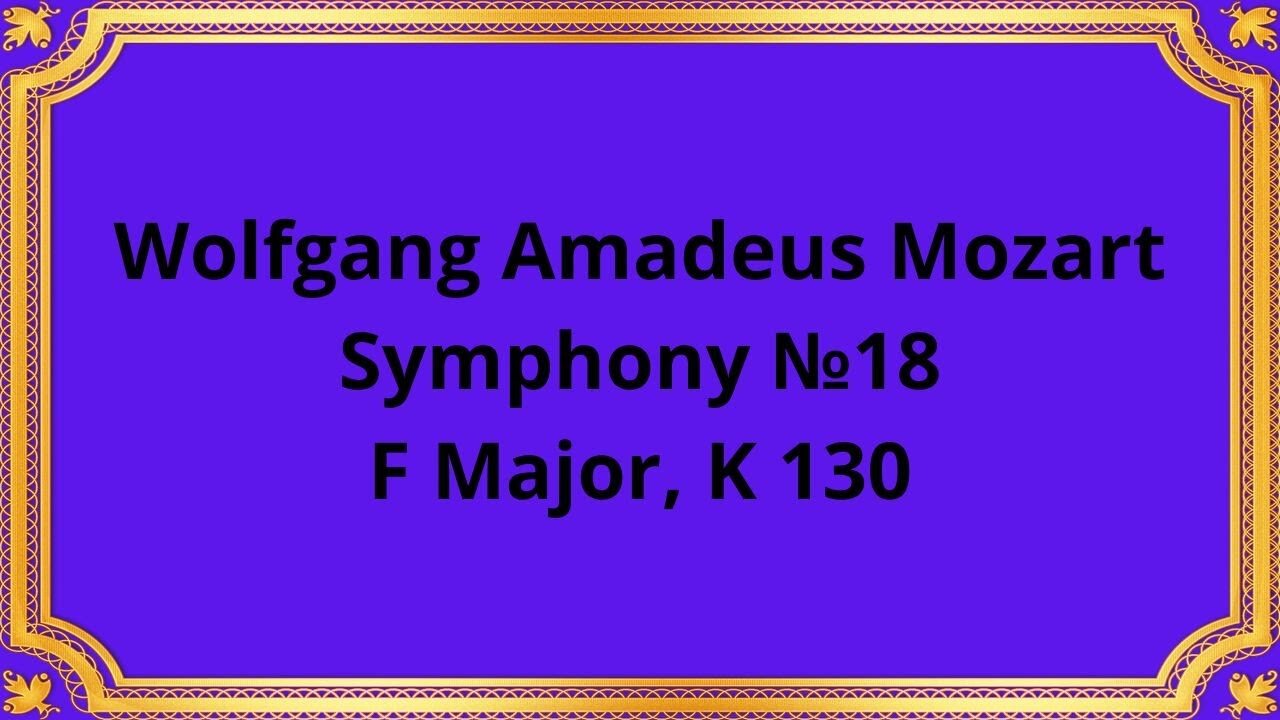Premium Only Content

Wolfgang Amadeus Mozart Symphony №18, F Major, K 130
#Mozart#Chamber_music#Classical_music#Symphony#Musical_composition
Publication date 1950
VIENNA SYMPHONY ORCHESTRA Conducted by HENRY SWOBODA
Wolfgang Amadeus Mozart, one of the most famous and influential composers of all time, composed Symphony #18 in F Major, K 130 in 1772. This symphony is an example of Mozart's early works, showcasing his mastery of classical music principles and demonstrating his unique style.
The composition is divided into four movements, which are structured according to the traditional symphonic form of the time. The first movement, marked Allegro, opens with a joyful and spirited theme played by the strings. This theme is then developed and expanded upon, with various instruments playing variations on the original melody.
The second movement, marked Andante, is a slower, more contemplative piece. The strings play a melancholy melody, which is then joined by the woodwinds. The movement builds to a climax before fading away into a soft and delicate conclusion.
The third movement, marked Menuetto, is a lively dance that features a playful melody played by the strings. The movement also includes a contrasting trio section that showcases the woodwinds.
The final movement, marked Allegro, is a fast and energetic piece that brings the symphony to a thrilling conclusion. The movement is marked by complex rhythms and intricate melodies, demonstrating Mozart's skill as a composer.
Overall, Symphony #18 in F Major, K 130 is a testament to Mozart's mastery of the classical symphonic form. Its four movements are a tour de force of musical technique and creativity, showcasing Mozart's ability to write music that is both technically impressive and emotionally resonant.
-
 18:26
18:26
Classical music_Music Inspiration
1 month agoLudwig van Beethoven Piano Sonata No. 8 in C minor, Op. 13 "Pathétique"
601 -
 LIVE
LIVE
Nerdrotic
3 hours agoCancel Kurtzman Trek | The Fate of the Superhero Film - Nerdrotic Nooner 502
475 watching -
 2:07:13
2:07:13
Steven Crowder
4 hours ago🔴Game Over: Trump's EU Trade Victory Shows How Stupid "Experts" Really Are
309K129 -
 DVR
DVR
Neil McCoy-Ward
1 hour agoTHE UK 🇬🇧 JUST ENDED 140 YEARS OF FREE SPEECH! (How Did It Come To THIS?!)
3.87K1 -
 LIVE
LIVE
The Charlie Kirk Show
1 hour agoTHE CHARLIE KIRK SHOW IS LIVE 07.28.25
5,114 watching -
 LIVE
LIVE
JuicyJohns
4 hours ago🟢#1 REBIRTH PLAYER 10.2+ KD🟢 !loadout
1,122 watching -
 52:11
52:11
Anthony Pompliano
1 hour agoWhy Bitcoin Will EXPLODE During The AI Era
14.1K -
 1:06:00
1:06:00
The Rubin Report
2 hours agoMajor Company’s Must-See Ad May Be the Official Death of Woke
39.4K39 -
 LIVE
LIVE
Robert Gouveia
2 hours agoBongino's "SHOCKING" Bombshell! Peter Strozk PANIC! Trump Assassin Case! Climate Change PLOT!
1,485 watching -
 LIVE
LIVE
LFA TV
18 hours agoLFA TV ALL DAY STREAM - MONDAY 7/28/25
3,113 watching